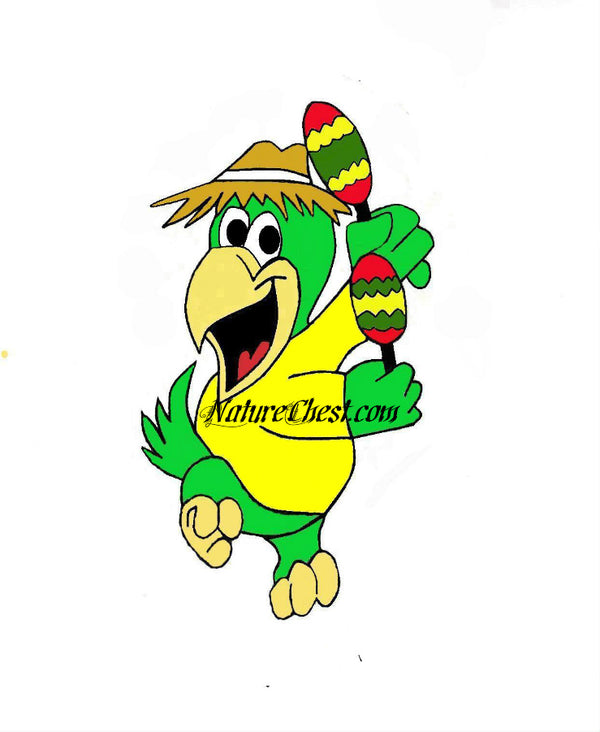Why Birds Molt
Share

Why do birds molt? Great question indeed. After 40+ years of living with parrots I'm so accustomed to having various sizes and colors of feathers throughout the bird room, I never remember why there are feathers scattered everywhere almost all the time.
For most bird people there are really only 3 different feather areas we deal with. Those fluffy white downy feathers that float around the room and tend to stick to clothing. The head and neck pin feathers that can cause prickly attitudes in our birds when touched. Lastly, those wing flight feathers and tail feathers that produce larger blood feathers.

Molts occur over time as parrot's feathers become damaged and raggedly looking by active play and rowdiness and a bird may need new fresh healthy feathers to replace the old ones. A parrot who has had nutritional issues in the past will grow new healthier feathers to replace the old ones and you might be surprised at how the colors of the new feathers may change and brighten. In the wild, birds need fresh bright new feathers to help attract mates so molting occurs naturally and that doesn't stop just because they live in our homes.
On average most birds will molt twice yearly, usually spring and fall. Molts often occur when the weather changes and homes begin to use heat or air conditioning which changes the bird's environmental temperatures. Whether a bird has natural light or artificial light can also affect molting cycles. There are some birds who molt lightly over the course of the year and never have a heavy feather exchange. As well as some birds who may only molt heavily every couple of years. A really heavy molt can last anywhere from 2 to 4 months. It takes on average 4-6 weeks for each feather to grow out. How often and how much can greatly depend on a bird's living conditions as much as the species of bird.
Molting takes a lot of energy and needs good nutrition. A heavy molt can be stressful on a bird's system and your bird should be monitored for any signs of high stress, loss of appetite, unusual quietness, or any other signs that your bird might need to see an avian vet to be sure there are no underlying health issues that might get worse during a heavy molt.
Feathers are made up of about 90% keratin but unlike human hair and fingernails which are also made of keratin, feathers do not continue to grow and grow. Feathers have a 'set size' depending on the particular type of feather, and once there, the feather stops growing.

A parrot's flight and tail feathers consist of several parts. There is the hollow shaft that attaches to the bird's skin, there is the central part of the feather shaft which has vanes attached. Every feather has 2 vanes which are the flattened parts of the feather that are attached on either side of the shaft of a feather. Then there are the barbs which are the many branches off the feather shaft, the barbules and barbicels which form the tiny extensions and help hold everything together, creating a final beautiful feather.

You may notice your bird scratching more than normal during a molt. However it is very unlikely your bird has suddenly been infected by any type of parasite. New feathers can be quite itchy and some feathers need to be scratched to help loosen the the thin keratin sheath layer that encases the new feather shaft. Feathers still in the pin feather stage can be quite tender so careful handling may be required when petting or holding your bird. Often lots of warm spray baths or open bath bowls for the smaller birds can help alleviate some of the itching.
As the large feather grows it has a viable source of a blood vein inside helping the feather to grow. As the feather grows larger, the blood supply vein recedes and when the feather is finished growing only the hollow shaft remains. These feathers are referred to as new 'blood feathers' until they have finished growing and the blood vein has completely receded. If you have your bird's wing flight feathers clipped for safety reasons, please make sure your bird groomer is experienced and knows how important it is to not clip blood feathers in the early stages of growth, as well as how to help protect blood feathers by not clipping surrounding protective feathers until the new feather is completely formed.
So whether you are finding lots of small fluffy downy feathers floating around, or seeing a few larger flight feathers and/or tail feathers every now and then, molts are natural and usually progress easily. If your bird is a little moody or a little grumpy for a few weeks, remember lots of patience and spray baths will help smooth the molting process.

